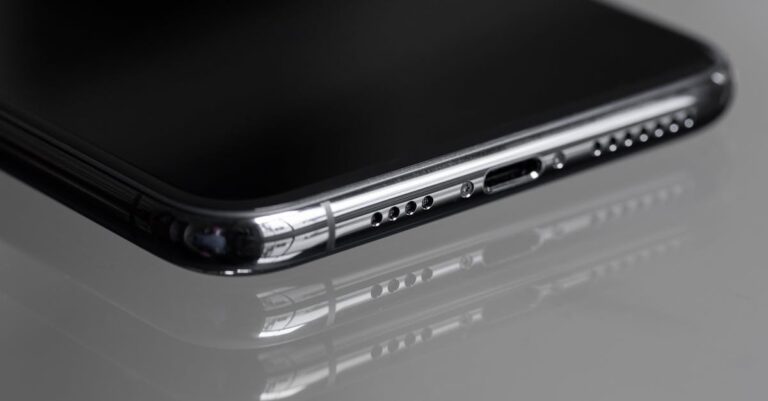Every iPhone user knows that unmistakable sound when a call comes in. It’s like a musical greeting that says, “Hey, I’m important!” But what exactly is that default ringtone that has become a part of our daily lives? Known as “Reflection,” this iconic tone has been ringing in the ears of Apple enthusiasts since its debut.
Imagine walking into a crowded room, and suddenly, you hear that familiar chime. Heads turn, and you can’t help but feel a little smug. It’s not just a ringtone; it’s a badge of honor. In a world of notifications and alerts, this simple melody stands out, capturing attention and sparking curiosity. So let’s dive into the world of iPhone ringtones and discover what makes “Reflection” the ultimate sound of connection.
Table of Contents
ToggleOverview of iPhone Ringtones
iPhone ringtones reflect Apple’s design philosophy, emphasizing both functionality and aesthetics. The default ringtone, “Reflection,” captivates users with its serene yet striking melody. Many individuals recognize this tone instantly, associating it with Apple’s branding and culture.
Users often seek to personalize their devices by exploring various ringtones beyond the default option. Numerous choices are available in the Settings app. Each ringtone, from classic tones to modern sounds, adds an individual touch to the user’s experience.
“Reflection” holds a unique status, standing as a combination of emotional resonance and technical excellence. The sound profile appeals widely, positioning it as a favorite among users worldwide. Users often report a sense of pride when receiving calls accompanied by this iconic ringtone.
Apple ensures that ringtones remain fresh by periodically introducing new options. Updates frequently add contemporary sounds, allowing users to keep their devices in sync with their personal style. These developments underscore the importance of adaptability in technology, aligning with changing consumer preferences.
Meanwhile, various apps provide users with the ability to create custom ringtones. This capability allows for a more tailored auditory experience, enhancing the connection between the user and the device. As a result, ringtones evolve into expressions of personal identity.
The significance of selecting a ringtone extends beyond mere notification. With each call, users send messages about their personality and taste. iPhone ringtones not only serve a practical purpose but also contribute to the overall user experience, fostering a deeper connection with the device.
History of iPhone Default Ringtone
The iPhone default ringtone reflects the evolution of Apple’s innovative approach to sound design. This signature ringtone, “Reflection,” plays a vital role in the brand’s identity.
Original Ringtone Release
“Reflection” made its debut with the iPhone 7 in 2016, offering a fresh sound experience. This ringtone was designed to evoke tranquility while maintaining a modern touch. Apple aimed to create a tone that resonated with users on an emotional level. The choice of “Reflection” marked a significant shift from previous ringtones, showcasing the company’s commitment to merging aesthetics with functionality.
Evolution Over Time
Over the years, Apple has introduced new ringtones, allowing users to personalize their devices. Despite this, “Reflection” retains its iconic status among iPhone users. Updates in the iOS operating system have occasionally altered the sound profiles of notifications, yet “Reflection” endures as a preferred choice. Apple’s consistent quality and emotional resonance keep this ringtone at the forefront. The ringtone has become synonymous with the iPhone experience, embodying the essence of Apple’s design philosophy.
Current Default Ringtone for iPhone
The default ringtone for iPhone continues to be “Reflection.” This iconic sound resonates deeply with Apple users and is a key feature of device notifications.
Name and Features
“Reflection” embodies serenity, its melody designed to evoke a calming atmosphere. Unique traits include a harmonious blend of soft tones that create an appealing auditory experience. Crafted for clarity, the tone stands out in noisy environments, enhancing its functionality. Emotional resonance plays a crucial role; users often associate it with their iPhone’s identity. Overall, “Reflection” serves not just as a ringtone but as a recognizable symbol of Apple’s commitment to design excellence.
Availability Across Models
“Reflection” debuted with the iPhone 7 in 2016 and has remained the default ringtone across subsequent models. Availability extends to all modern iPhones, ensuring a cohesive experience among users. While new ringtones appear with software updates, “Reflection” consistently retains its position. Different iPhone generations, from the iPhone 8 to the latest models, include this iconic sound, emphasizing its status within Apple’s ecosystem. Users appreciate this continuity, as it maintains a connection that transcends model updates.
Customization Options for Ringtones
Many iPhone users enjoy personalizing their devices beyond the default ringtone, “Reflection.” Options for customization include selecting from the built-in tones available in the Settings app. Users can explore various sounds, like “Opening” and “Alert,” to better suit their preferences.
Ringtone apps play a significant role in customization. Several applications enable users to create custom ringtones using their favorite songs or sound clips. These tools often provide guides for easy extraction and editing, offering flexibility in sound choice.
Additionally, iTunes allows users to sync their customized ringtones to their devices. Through iTunes, users can import their personalized tones, ensuring a unique auditory experience that reflects individual style. Creating a custom ringtone using iTunes requires importing a song, trimming it to 30 seconds or less, and syncing it back to the iPhone.
Exploring custom ringtones fosters a deeper connection with the device. A personalized tone resonates emotionally, enhancing the overall user experience. Apple continues to update its ringtone library in iOS updates, ensuring new sounds periodically become available.
Refreshing the auditory experience keeps customization exciting for users. Regular updates may introduce contemporary sounds or classics, aligning with users’ evolving preferences. This continuous innovation maintains the relevance of ringtone options for long-term iPhone users.
Maintaining individuality in ringtone selection showcases personal identity. Enhanced user connection with the device reflects not just a functional choice but also a meaningful expression through sound. Ultimately, the opportunity to customize ringtones empowers users to craft their auditory signature.
Conclusion
The default ringtone “Reflection” stands as a testament to Apple’s commitment to design and user experience. Its soothing melody not only serves as a notification but also enhances the emotional connection users have with their devices. As iPhone users continue to explore customization options, “Reflection” remains a beloved choice, symbolizing both individuality and brand identity.
With its harmonious tones and clarity, it’s no wonder this ringtone has maintained its iconic status across generations. Whether users opt for the default tone or venture into personalized sounds, the choice of ringtone reflects a deeper connection to their devices, making each notification a unique auditory experience.



